Electroluminescent material, method for manufacturing same, and light emitting device
Wang May 4, 2
U.S. patent number 10,995,266 [Application Number 16/611,299] was granted by the patent office on 2021-05-04 for electroluminescent material, method for manufacturing same, and light emitting device. This patent grant is currently assigned to Wuhan China Star Optoelectronics Semiconductor Display Technology Co., Ltd.. The grantee listed for this patent is Wuhan China Star Optoelectronics Semiconductor Display Technology Co., Ltd.. Invention is credited to Yanjie Wang.

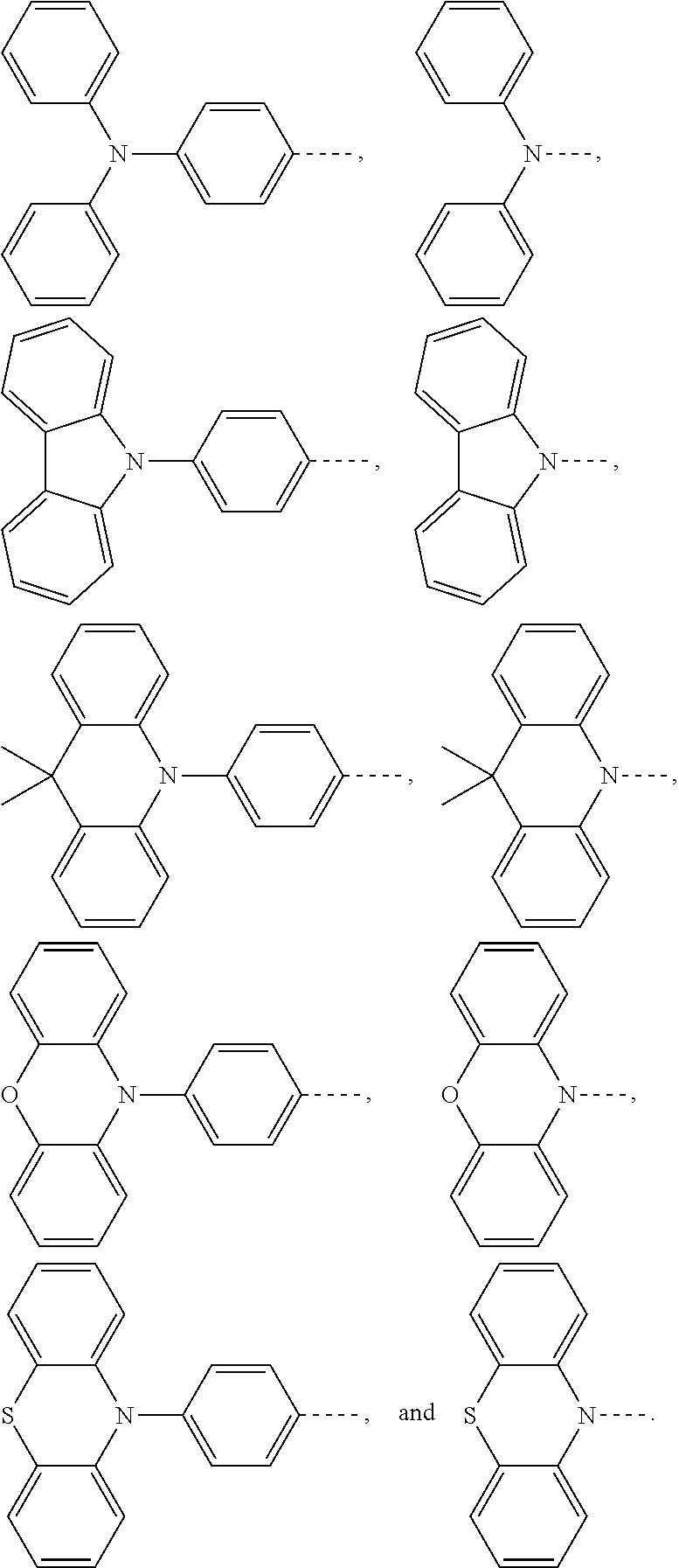



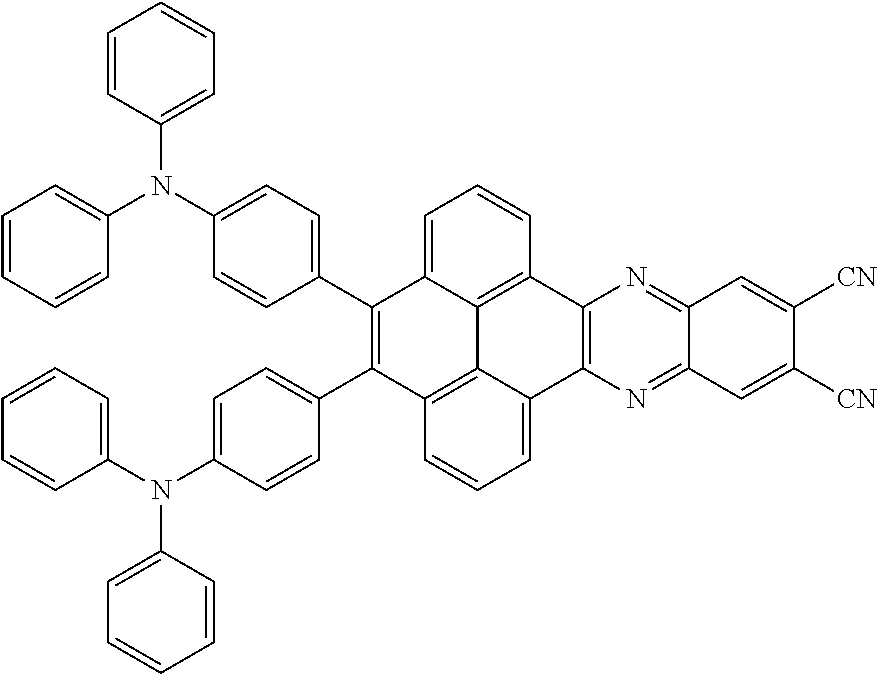
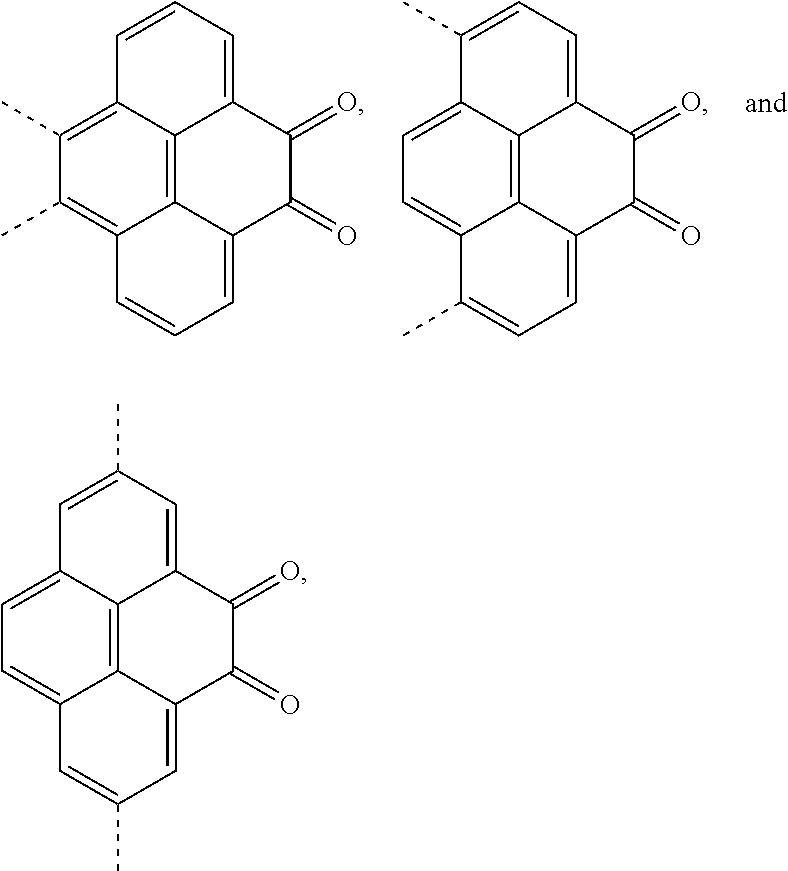
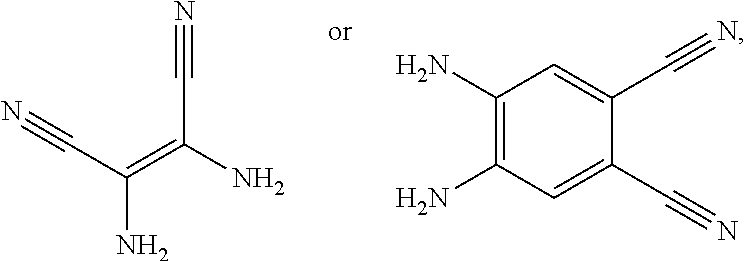

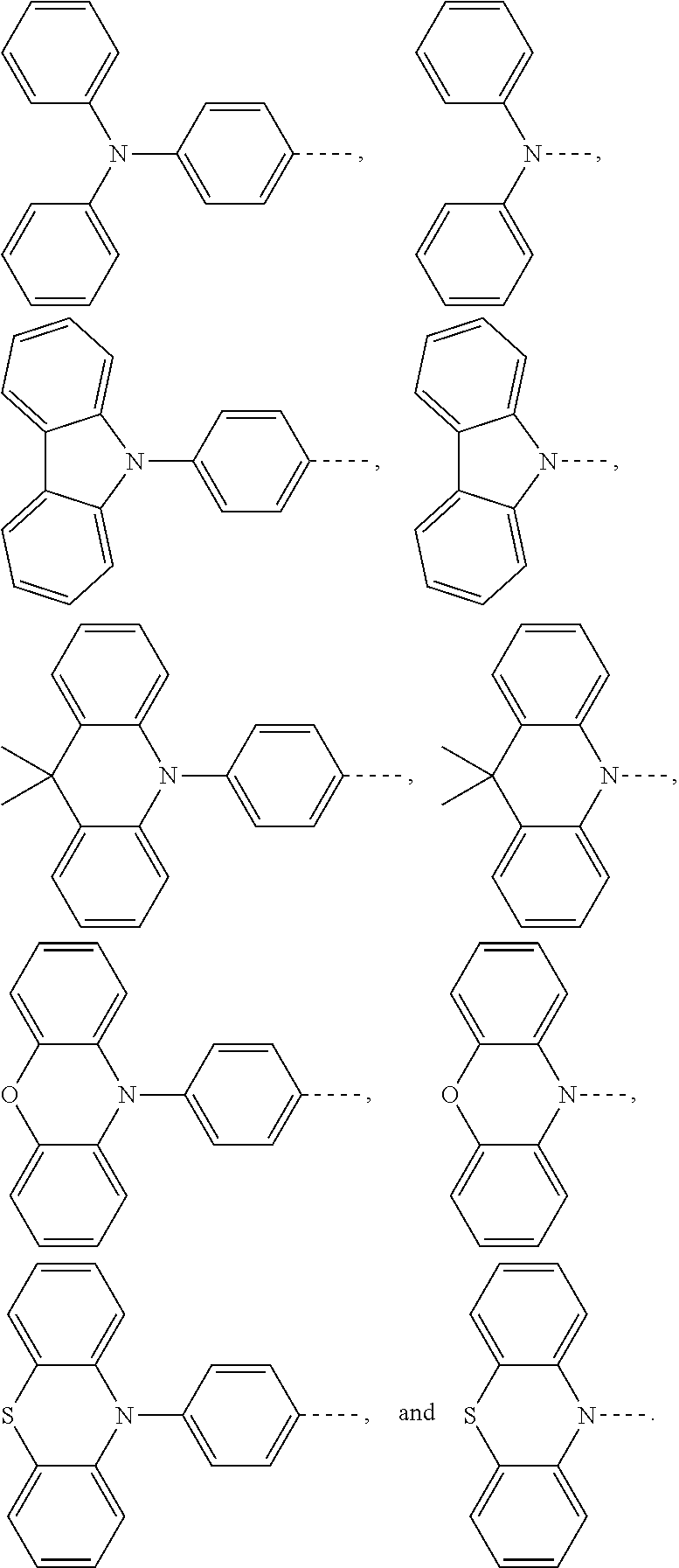


View All Diagrams
| United States Patent | 10,995,266 |
| Wang | May 4, 2021 |
Electroluminescent material, method for manufacturing same, and light emitting device
Abstract
The present application provides an electroluminescent material, a method for manufacturing the electroluminescent material, and a light emitting device, the asymmetric monocyanopyrazine of the pyrene nucleus of the electroluminescent material is used as an acceptor, and the pyrene nucleus has a large plane and rigid P-type delayed fluorescence characteristic, which can combine triplet excitons via triplet excitons-triplet excitons to enhance utilization of excitons, thereby to achieve an electroluminescent material, a method for manufacturing the electroluminescent material, and a light emitting device, to realize an electroluminescent material and a light emitting device with a high quantum efficiency.
| Inventors: | Wang; Yanjie (Wuhan, CN) | ||||||||||
|---|---|---|---|---|---|---|---|---|---|---|---|
| Applicant: |
|
||||||||||
| Assignee: | Wuhan China Star Optoelectronics
Semiconductor Display Technology Co., Ltd. (Wuhan,
CN) |
||||||||||
| Family ID: | 1000005528938 | ||||||||||
| Appl. No.: | 16/611,299 | ||||||||||
| Filed: | September 11, 2019 | ||||||||||
| PCT Filed: | September 11, 2019 | ||||||||||
| PCT No.: | PCT/CN2019/105453 | ||||||||||
| 371(c)(1),(2),(4) Date: | November 06, 2019 | ||||||||||
| PCT Pub. No.: | WO2020/258525 | ||||||||||
| PCT Pub. Date: | December 30, 2020 |
Prior Publication Data
| Document Identifier | Publication Date | |
|---|---|---|
| US 20200399533 A1 | Dec 24, 2020 | |
Foreign Application Priority Data
| Jun 24, 2019 [CN] | 201910549064.X | |||
| Current U.S. Class: | 1/1 |
| Current CPC Class: | H01L 51/0059 (20130101); H01L 51/0072 (20130101); C09K 11/06 (20130101); H01L 51/5012 (20130101); H01L 51/5072 (20130101); H01L 51/5056 (20130101); C09K 2211/1466 (20130101) |
| Current International Class: | C09K 11/06 (20060101); H01L 51/50 (20060101); H01L 51/00 (20060101) |
| Field of Search: | ;257/40 ;428/690 |
References Cited [Referenced By]
U.S. Patent Documents
| 2017/0029362 | February 2017 | Howard, Jr. et al. |
Claims
What is claimed is:
1. An electroluminescent material, wherein a structural formula of the electroluminescent material is R.sub.2-R.sub.1-R.sub.2, wherein a structural formula of the R.sub.1 group comprises one selected from the group consisting of ##STR00076## and a structural formula of the R.sub.2 group comprises one selected from the group consisting of ##STR00077##
2. The electroluminescent material of claim 1, wherein the structural formula of the electroluminescent material is ##STR00078## and a peak value of the electroluminescent material ##STR00079## ranges from 710nm to 730nm.
3. The electroluminescent material of claim 1, wherein the structural formula of the electroluminescent material is ##STR00080## and a peak value of the electroluminescent material ##STR00081## ranges from 750nm to 770nm.
4. A method for manufacturing an electroluminescent material, comprising: providing a first reactant and a second reactant, and reacting the first reactant and the second reactant to generate a first intermediate product, wherein the first reactant is a compound containing a R.sub.3 group, a structural formula of the R.sub.3 group is one selected from the group consisting of ##STR00082## a structural formula of the second reactant is ##STR00083## the first intermediate product is a compound containing a R.sub.1 group, a structural formula of the R.sub.1 group is one selected from the group consisting of ##STR00084## and providing a third reactant, and reacting the first intermediate product and the third reactant to generate the electroluminescent material, wherein the third reactant comprises a compound containing a R.sub.2 group, and a structural formula of the R.sub.2 group is ##STR00085##
5. The method for manufacturing the electroluminescent material of claim 4, wherein a structural formula of the first reactant is Br--R.sub.3--Br, a structural formula of the first intermediate product is Br--R.sub.1--Br.
6. The method for manufacturing the electroluminescent material of claim 4, wherein in the step of reacting the first reactant and the second reactant to generate the first intermediate product, a relationship between a molar quantity of the first reactant and a molar quantity of the second reactant is that for 10 millimoles of the first reactant, there are 5 millimoles-20 millimoles of the second reactant.
7. The method for manufacturing the electroluminescent material of claim 4, wherein the first reactant and the second reactant are reacted in a first solvent to generate the first intermediate product, and the first solvent comprises acetic acid, formic acid, formaldehyde, hydroxypropionic acid, thioglycolic acid, indole-3-acetic acid, methyl formate, 2-hydroxyacetaldehyde, ethyl formate, methyl acetate, peroxypropionic acid, peracetic acid, or combinations thereof.
8. The method for manufacturing the electroluminescent material of claim 4, wherein the third reactant is R.sub.2--X, wherein the X group is a boronic acid group or a boronic acid pinacol ester group.
9. The method for manufacturing the electroluminescent material of claim 4, wherein in the step of reacting the first intermediate product and the third reactant to generate the electroluminescent material, a relationship between a molar quantity of the first intermediate product and a molar quantity of the third reactant is that for 5 millimoles of the first intermediate product, there are 8 millimoles-15 millimoles of the third reactant.
10. The method for manufacturing the electroluminescent material of claim 4, wherein the first intermediate product and the third reactant are reacted in a second solvent to generate the electroluminescent material, and the second solvent comprises tetrahydrofuran, formaldehyde, ether, vinyl ether, diisopropyl ether, perchloroethylene, trichloroethylene, acetone, ethylene glycol ether, triethanolamine, or combinations thereof.
11. The method for manufacturing the electroluminescent material of claim 10, wherein the second solvent contains an additive, the additive comprises sodium carbonate, potassium carbonate, potassium carbonate aqueous solution, tetrakis(triphenylphosphine)palladium, n-butyllithium, potassium hydroxide, sodium hydroxide and sodium t-butoxide, or combinations thereof.
12. The method for manufacturing the electroluminescent material of claim 11, wherein the second solvent is tetrahydrofuran, the additive is aqueous solution of sodium carbonate and tetrakis(triphenylphosphine)palladium.
13. The method for manufacturing the electroluminescent material of claim 4, wherein a structural formula of the electroluminescent material is R.sub.2-R.sub.1-R.sub.2.
14. A light emitting device comprising: a substrate layer, wherein the substrate layer comprises a base and an anode layer, the anode layer is formed on the base; a hole injection layer, wherein the hole injection layer is formed on the anode layer; a hole transport layer, wherein the hole transport layer is formed on the hole injection layer; a light emitting layer, wherein the light emitting layer is formed on the hole transport layer; an electron transport layer, wherein the electron transport layer is formed on the light emitting layer; and a cathode layer, wherein the cathode layer is formed on the electron transport layer; wherein the light emitting layer comprises the electroluminescent material, wherein a structural formula of the electroluminescent material is R.sub.2-R.sub.1-R.sub.2, wherein a structural formula of R.sub.1 group comprises one selected from the group consisting of ##STR00086## and a structural formula of R.sub.2 group comprises one selected from the group consisting of ##STR00087## ##STR00088##
15. The light emitting device of claim 14, wherein the structural formula of the electroluminescent material is ##STR00089## and a peak value of the electroluminescent material ##STR00090## ranges from 710nm to 730nm.
16. The light emitting device of claim 14, wherein the structural formula of the electroluminescent material is ##STR00091## and a peak value of the electroluminescent material ##STR00092## ranges from 750nm to 770nm.
17. The light emitting device of claim 14, wherein a thickness of the light emitting layer ranges from 20nm to 60nm.
Description
RELATED APPLICATIONS
This application is a National Phase of PCT Patent Application No. PCT/PCT/CN2019/105453 having International filing date of Sep. 11, 2019, which claims the benefit of priority of Chinese Patent Application No. 201910549064.X filed on Jun. 24, 2019. The contents of the above applications are all incorporated by reference as if fully set forth herein in their entirety.
FIELD AND BACKGROUND OF THE INVENTION
The present application relates to a lighting field, and particularly to an electroluminescent material, a method for manufacturing the electroluminescent material, and a light emitting device.
In prior art, for thermal activated delay fluorescent (TADF) materials, a small .DELTA.EST and a high photoluminescence quantum yield (PLQY) are necessary conditions for manufacturing organic lighting-emitting diodes (OLED) with high efficiency. Currently, TADF materials with green light and sky blue light have achieved external quantum efficiency (EQE) of more than 30%, but TADF materials with red light and deep red light cannot achieve excellent device performances due to the energy gap law. It is necessary to provide a highly efficient electroluminescent material capable of emitting deep red light, a method for manufacturing the electroluminescent material, and a light emitting device.
SUMMARY OF THE INVENTION
The present application provides an electroluminescent material, a method for manufacturing the electroluminescent material, and a light emitting device, to realize an electroluminescent material and a light emitting device with a high quantum efficiency.
The present application provides an electroluminescent material, a structural formula of the electroluminescent material is R.sub.2-R.sub.1-R.sub.2, wherein a structural formula of the R.sub.1 group comprises one selected from the group consisting
##STR00001## and a structural formula of the R.sub.2 group comprises one selected from the group consisting of
##STR00002##
In the electroluminescent material, the structural formula of the electroluminescent material is
##STR00003## and a peak value of the electroluminescent material
##STR00004## ranges from 710nm to 730nm.
In the electroluminescent material, the structural formula of the electroluminescent material is
##STR00005## and a peak value of the electroluminescent material
##STR00006## ranges from 750nm to 770nm.
The present application provides a method for manufacturing the electroluminescent material includes:
providing a first reactant and a second reactant, and reacting the first reactant and the second reactant to generate a first intermediate product, wherein the first reactant is a compound containing a R.sub.3 group, a structural formula of the R.sub.3 group is one selected from the group consisting of
##STR00007## a structural formula of the second reactant is
##STR00008## the first intermediate product is a compound containing a R.sub.1 group, a structural formula of the R.sub.1 group is one selected from the group
##STR00009## consisting of and
providing a third reactant, and reacting the first intermediate product and the third reactant to generate the electroluminescent material, wherein the third reactant comprises a compound containing a R.sub.2 group, and a structural formula of the R.sub.2 group is
##STR00010##
In the method for manufacturing the electroluminescent material of the present application, a structural formula of the first reactant is Br--R.sub.3--Br, a structural formula of the first intermediate product is Br--R.sub.1--Br
In the method for manufacturing the electroluminescent material of the present application, in the step of reacting the first reactant and the second reactant to generate the first intermediate product, a relationship between a molar quantity of the first reactant and a molar quantity of the second reactant is that for 10 millimoles of the first reactant, there are 5 millimoles-20 millimoles of the second reactant.
In the method for manufacturing an electroluminescent material of the present application, the first reactant and the second reactant are reacted in a first solvent to generate the first intermediate product, and the first solvent includes acetic acid, formic acid, formaldehyde, hydroxypropionic acid, thioglycolic acid, indole-3-acetic acid, methyl formate, 2-hydroxyacetaldehyde, ethyl formate, methyl acetate, peroxypropionic acid, peracetic acid, or combinations thereof.
In the method for manufacturing an electroluminescent material of the present application, the third reactant is R.sub.2--X, wherein the X group is a boronic acid group or a boronic acid pinacol ester group.
In the method for manufacturing the electroluminescent material of the present application, in the step of reacting the first intermediate product and the third reactant to generate the electroluminescent material, a relationship between a molar quantity of the first intermediate product and a molar quantity of the third reactant is that for 5 millimoles of the first intermediate product, there are 8 millimoles-15 millimoles of the third reactant.
In the method for manufacturing an electroluminescent material of the present application, the first intermediate product and the third reactant are reacted in a second solvent to generate the electroluminescent material, and the second solvent includes tetrahydrofuran, formaldehyde, ether, vinyl ether, diisopropyl ether, perchloroethylene, trichloroethylene, acetone, ethylene glycol ether, triethanolamine, or combinations thereof.
In the method for manufacturing an electroluminescent material of the present application, the second solvent contains an additive, the additive comprises sodium carbonate, potassium carbonate, potassium carbonate aqueous solution, tetrakis(triphenylphosphine)palladium, n-butyllithium, potassium hydroxide, sodium hydroxide and sodium t-butoxide, or combinations thereof.
In the method for manufacturing an electroluminescent material of the present application, the second solvent is tetrahydrofuran, the additive is aqueous solution of sodium carbonate and tetrakis(triphenylphosphine)palladium.
In the method for manufacturing an electroluminescent material of the present application, a structural formula of the electroluminescent material is R.sub.2-R.sub.1-R.sub.2.
The present application provides a light emitting device including:
a substrate layer, wherein the substrate layer includes a base and an anode layer, the anode layer is formed on the base;
a hole injection layer, wherein the hole injection layer is formed on the anode layer;
a hole transport layer, wherein the hole transport layer is formed on the hole injection layer;
a light emitting layer, wherein the light emitting layer is formed on the hole transport layer;
an electron transport layer, wherein the electron transport layer is formed on the light emitting layer; and
a cathode layer, wherein the cathode layer is formed on the electron transport layer;
the light emitting layer includes the electroluminescent material, a structural formula of the electroluminescent material is R.sub.2-R.sub.1-R.sub.2, wherein a structural formula of R.sub.1 group comprises one selected from the group consisting of
##STR00011## and a structural formula of R.sub.2 group comprises one selected from the group consisting of
##STR00012## ##STR00013##
In the light emitting device, the structural formula of the electroluminescent material is
##STR00014## and a peak value of the electroluminescent material
##STR00015## ranges from 710nm to 730nm.
In the light emitting device, the structural formula of the electroluminescent material is
##STR00016## and a peak value of the electroluminescent material
##STR00017## ranges from 750nm to 770nm.
In the light emitting device, a thickness of the light emitting layer ranges from 20nm to 60nm.
The benefit is: the present application provides an electroluminescent material, a method for manufacturing the electroluminescent material, and a light emitting device, and via reacting the first reactant and the second reactant to generate the first intermediate product, reacting the first intermediate product and the third reactant to generate the electroluminescent material, and the asymmetric monocyanopyrazine of the pyrene nucleus is used as an acceptor, and the pyrene nucleus has a large plane and rigid P-type delayed fluorescence characteristic, which can combine triplet excitons via triplet excitons-triplet excitons to enhance utilization of excitons, thereby to achieve an electroluminescent material, a method for manufacturing the electroluminescent material, and a light emitting device, to realize an electroluminescent material and a light emitting device with a high quantum efficiency.
BRIEF DESCRIPTION OF THE SEVERAL VIEWS OF THE DRAWINGS
FIG. 1 is a theoretical simulation calculation diagram of highest occupied molecular orbital (HOMO) of an electroluminescent material
##STR00018## of the present application.
FIG. 2 is a theoretical simulation calculation diagram of lowest unoccupied molecular orbital (LUMO) of the electroluminescent material
##STR00019## of the present application.
FIG. 3 is a fluorescence emission spectrogram under a pure film of the electroluminescent material
##STR00020## and the electroluminescent material
##STR00021## of the present application.
FIG. 4 is a schematic structural view of a light emitting device of the present application.
DESCRIPTION OF SPECIFIC EMBODIMENTS OF THE INVENTION
The present application provides an electroluminescent material. A structural formula of the electroluminescent material is R.sub.2-R.sub.1-R.sub.2. A structural formula of R.sub.1 group includes one selected from the group consisting of
##STR00022## ##STR00023##
A structural formula of R.sub.2 group includes one selected from the group consisting of
##STR00024##
The electroluminescent material is a heavy red light thermally activated delayed fluorescence (TADF) material. The electroluminescent material has 60 different structural formulas by permutations of the R.sub.1 group and the R.sub.2 group, in some embodiments, structural formulas of the electroluminescent materials can be
##STR00025## and so on.
The present application also provides a method for manufacturing the electroluminescent material including:
A, providing a first reactant and a second reactant, and reacting the first reactant and the second reactant to generate a first intermediate product, wherein the first reactant is a compound containing a R.sub.3 group, a structural formula of the R.sub.3 group is one selected from the group consisting of
##STR00026## a structural formula of the second reactant is
##STR00027## the first intermediate product is a compound containing a R.sub.1 group, a structural formula of the R.sub.1 group is one selected from the group consisting of
##STR00028## ##STR00029##
A structural formula of the first reactant can be Br--R.sub.3--Br. A structural formula of the first intermediate product can be Br--R.sub.1--Br
When the second reactant is
##STR00030## a reaction equation of reacting the first reactant and the second reactant to generate the first intermediate product can be:
##STR00031##
When the second reactant is
##STR00032## a reaction equation of reacting the first reactant and the second reactant to generate the first intermediate product can be:
##STR00033##
In one embodiment, in the step of reacting the first reactant and the second reactant to generate the first intermediate product, a relationship between a molar quantity of the first reactant and a molar quantity of the second reactant is that for 10 millimoles of the first reactant, there are 5 millimoles-20 millimoles of the second reactant. In detail, the relationship between a molar quantity of the first reactant and a molar quantity of the second reactant can be that for 10 millimoles of the first reactant, there are 10 millimoles of the second reactant. The relationship between a molar quantity of the first reactant and a molar quantity of the second reactant can be that for 1 molar of the first reactant, there are 1.5 molars of the second reactant
In one embodiment, the first reactant and the second reactant are reacted in a first solvent to generate the first intermediate product, and the first solvent includes acetic acid, formic acid, formaldehyde, hydroxypropionic acid, thioglycolic acid, indole-3-acetic acid, methyl formate, 2-hydroxyacetaldehyde, ethyl formate, methyl acetate, peroxypropionic acid, peracetic acid, or combinations thereof.
In one embodiment, the first reactant can be
##STR00034## and the second reactant can be
##STR00035##
In one embodiment, a reaction equation of reacting the first reactant and the second reactant to generate the first intermediate product can be:
##STR00036##
In one embodiment, 10 millimoles of the first reactant
##STR00037## and 10 millimoles of the second reactant
##STR00038## are added into 100 milliliters Schlenk bottle, 30mL-60mL of the first solvent acetic acid is added, those are heated and reacted at an argon atmosphere for 24 hours to obtain a first mixture containing the first intermediate product, a separating and purifying process is employed for the first mixture to obtain the first intermediate product
##STR00039##
In one embodiment, the first reactant can be
##STR00040## and the second reactant can be
##STR00041##
In one embodiment, a reaction equation of reacting the first reactant and the second reactant to generate the first intermediate product also can be:
##STR00042##
In one embodiment, 100 millimoles of the first reactant
##STR00043## and 10 millimoles of the second reactant
##STR00044## are added into 100 milliliters Schlenk bottle, 40mL-50mL of the first solvent acetic acid is added, those are heated and reacted at an argon atmosphere for 12-36 hours to obtain a first mixture containing the first intermediate product, a separating and purifying process is employed for the first mixture to obtain the first intermediate product
##STR00045##
In some embodiments, the first intermediate product is yellow powder, and a yield of the first intermediate product is more than 80%.
B, providing a third reactant, and reacting the first intermediate product and the third reactant to generate the electroluminescent material, wherein the third reactant comprises a compound containing a R.sub.2 group, and a structural formula of the R.sub.2 group is
##STR00046##
A structural formula of the electroluminescent material is R.sub.2-R.sub.1-R.sub.2. A structural formula of R.sub.1 group includes one selected from the group consisting of
##STR00047## ##STR00048## and a structural formula of R.sub.2 group includes one selected from the group consisting of
##STR00049##
The third reactant can be R.sub.2--X. The X group can be a boronic acid group or a boronic acid pinacol ester group.
A reaction equation of reacting the first intermediate product and the third reactant to generate the electroluminescent material can be: Br--R.sub.1--Br+R.sub.2--X.fwdarw.R.sub.2-R.sub.1-R.sub.2
Wherein, R.sub.2--X is a compound containing the R.sub.2 group.
In the step of reacting the first intermediate product and the third reactant to generate the electroluminescent material, a relationship between a molar quantity of the first intermediate product and a molar quantity of the third reactant is that for 5 millimoles of the first intermediate product, there are 8 millimoles-15 millimoles of the third reactant. In detail, a relationship between a molar quantity of the first intermediate product and a molar quantity of the third reactant can be that for 5 millimoles of the first intermediate product, there are 11 millimoles of the third reactant. A relationship between a molar quantity of the first intermediate product and a molar quantity of the third reactant can be that for 1 molars of the first intermediate product, there are 2 molars of the third reactant.
In one embodiment, the first intermediate product and the third reactant are reacted in a second solvent to generate the electroluminescent material, and the second solvent includes tetrahydrofuran, formaldehyde, ether, vinyl ether, diisopropyl ether, perchloroethylene, trichloroethylene, acetone, ethylene glycol ether, triethanolamine, or combinations thereof.
In one embodiment, the second solvent contains an additive, the additive includes sodium carbonate, potassium carbonate, potassium carbonate aqueous solution, tetrakis(triphenylphosphine)palladium, n-butyllithium, potassium hydroxide, sodium hydroxide and sodium t-butoxide, or combinations thereof.
In one embodiment, the first intermediate product can be
##STR00050## and the third reactant can be
##STR00051##
In one embodiment, a reaction equation of reacting the first intermediate product and the third reactant to generate the electroluminescent material can be:
##STR00052##
In some embodiments, 5 millimoles of the first intermediate product
##STR00053## and 11 millimoles of the third reactant
##STR00054## are added into a 250 ml tri-neck bottle, the second solvent tetrahydrofuran is added, and the additive sodium carbonate aqueous solution is added, an argon is applied to exchange gas, the additive tetrakis(triphenylphosphine)palladium is added, those are heated to a temperature of 80 degrees Celsius and reflowed reacted 24 hours to obtain the second mixture containing the electroluminescent material, a separating and purifying process is employed for the second mixture to obtain the electroluminescent material
##STR00055##
In one embodiment, the first intermediate product can be
##STR00056## and the third reactant can be
##STR00057##
In one embodiment, a reaction equation of reacting the first intermediate product and the third reactant to generate the electroluminescent material also can be:
##STR00058##
In some embodiments, 5 millimoles of the first intermediate product
##STR00059## and 11 millimoles of the third reactant
##STR00060## are added into a 250 ml tri-neck bottle, the second solvent tetrahydrofuran is added, and the additive sodium carbonate aqueous solution is added, an argon is applied to exchange gas, the additive tetrakis(triphenylphosphine)palladium is added, those are heated to a temperature of 60 degrees Celsius to 100 degrees Celsius, and reflowed reacted 12 hours to 24 hours to obtain the second mixture containing the electroluminescent material, a separating and purifying process is employ for the second mixture to obtain the electroluminescent material
##STR00061##
Referring to FIG. 1 and FIG. 2, FIG. 1 is a theoretical simulation calculation diagram of highest occupied molecular orbital (HOMO) of an electroluminescent material
##STR00062## of the present application, FIG. 2 is a theoretical simulation calculation diagram of lowest unoccupied molecular orbital (LUMO) of the electroluminescent material
##STR00063## of the present application. Electron cloud distribution overlap between a highest occupied molecular orbital and a lowest unoccupied molecular orbital of the electroluminescent material
##STR00064## is small, a donor group is occupied by the highest occupied molecular orbital, and an acceptor group is occupied by the lowest unoccupied molecular orbital.
Referring to table 1, table 1 is peak values of the fluorescence spectrums, energy level values, and photoluminescence quantum yields of the electroluminescent materials.
TABLE-US-00001 TABLE 1 PL Peak S.sub.1 T.sub.1 .DELTA.E.sub.ST PLQY Electroluminescent Material (nm) (eV) (eV) (eV) (%) ##STR00065## 716 2.05 2.03 0.03 78 ##STR00066## 758 2.01 1.96 0.05 65
Wherein, the PL Peak is a peak value of a fluorescence spectrum of the electroluminescent material, S.sub.1 is the lowest singlet energy level value, T1 is the lowest triplet energy level value, .DELTA.E.sub.ST=S.sub.1-T.sub.1, and PLQY is photoluminescence quantum yield.
Referring to FIG. 3, FIG. 3 is a fluorescence emission spectrogram under a pure film of the electroluminescent material
##STR00067## and the electroluminescent material
##STR00068## of the present application. The peak value of the electroluminescent material
##STR00069## is between 710nm-730nm. The peak value of the electroluminescent material
##STR00070## is between 750nm-770nm. A wavelength of the peak value corresponding to the wavelength is a wavelength of red light. Therefore, the electroluminescent material of the present application is a red light emitted.
Referring to FIG. 4, the present application provides a light emitting device 100. The light emitting device includes a substrate layer 11, a hole injection layer 12, a hole transport layer 13, a light emitting layer 14, an electron transport layer 15, and a cathode layer 16.
The substrate layer 11 includes a base 111 and an anode layer 112. The base 111 can be a glass substrate or a transparent plastic substrate. The anode layer 112 is formed on the base 111. The anode layer 112 is made of an indium tin oxide material. The hole injection layer 12 is formed on the anode layer 112. The hole transport layer 13 is formed on the hole injection layer 12. The light emitting layer 14 is formed on the hole transport layer 13. The light emitting layer 14 includes the electroluminescent material, a structural formula of the electroluminescent material is R.sub.2-R.sub.1-R.sub.2, wherein a structural formula of R.sub.1 group includes one selected from the group consisting of
##STR00071## ##STR00072## and a structural formula of R.sub.2 group includes one selected from the group consisting of
##STR00073## The electron transport layer 15 is formed on the light emitting layer 14. The cathode layer 16 is formed on the electron transport layer 15. The cathode layer 16 can be a lithium fluoride/aluminum material.
In a plurality of embodiment, a thickness of the hole injection layer can be 10 nm-50 nm. A thickness of the hole transport layer can be 20nm-60nm. A thickness of the light emitting layer can be 20nm-60nm. A thickness of the electron transport layer can be 20nm-60nm. A thickness of the cathode layer can be 80nm-120nm.
The light emitting device 1 and device 2 are manufactured according to a well-known method in the art, the light emitting layer of the device 1 includes
##STR00074## and the light emitting layer of the device 2 includes
##STR00075##
Referring to table 2, table 2 is a performance data sheet of the light emitting device of the present application
TABLE-US-00002 TABLE 2 Maximum Maximum External Luminance EL peak Quantum Efficiency Device (cd/m.sup.2) (nm) (%) Device 1 2395 685 12 Device 2 1983 727 9
The present application provides an electroluminescent material, a method for manufacturing the electroluminescent material, and a light emitting device, and via reacting the first reactant and the second reactant to generate the first intermediate product, reacting the first intermediate product and the third reactant to generate the electroluminescent material, and the asymmetric monocyanopyrazine of the pyrene nucleus is used as an acceptor, and the pyrene nucleus has a large plane and rigid P-type delayed fluorescence characteristic, which can combine triplet excitons via triplet excitons-triplet excitons to enhance utilization of excitons, thereby to achieve an electroluminescent material, a method for manufacturing the electroluminescent material, and a light emitting device, to realize an electroluminescent material and a light emitting device with a high quantum efficiency.
The embodiments of the present application are described in detail above, and the principles and implementations of the present application are set forth in the specific examples. The description of the above embodiments is only for helping to understand the present application. In the meantime, those skilled in the art will be able to change the specific embodiments and the scope of the application according to the idea of the present application. In the above, the content of the specification should not be construed as limiting the present application.
* * * * *
C00001

C00002

C00003

C00004

C00005

C00006

C00007

C00008

C00009

C00010

C00011

C00012

C00013
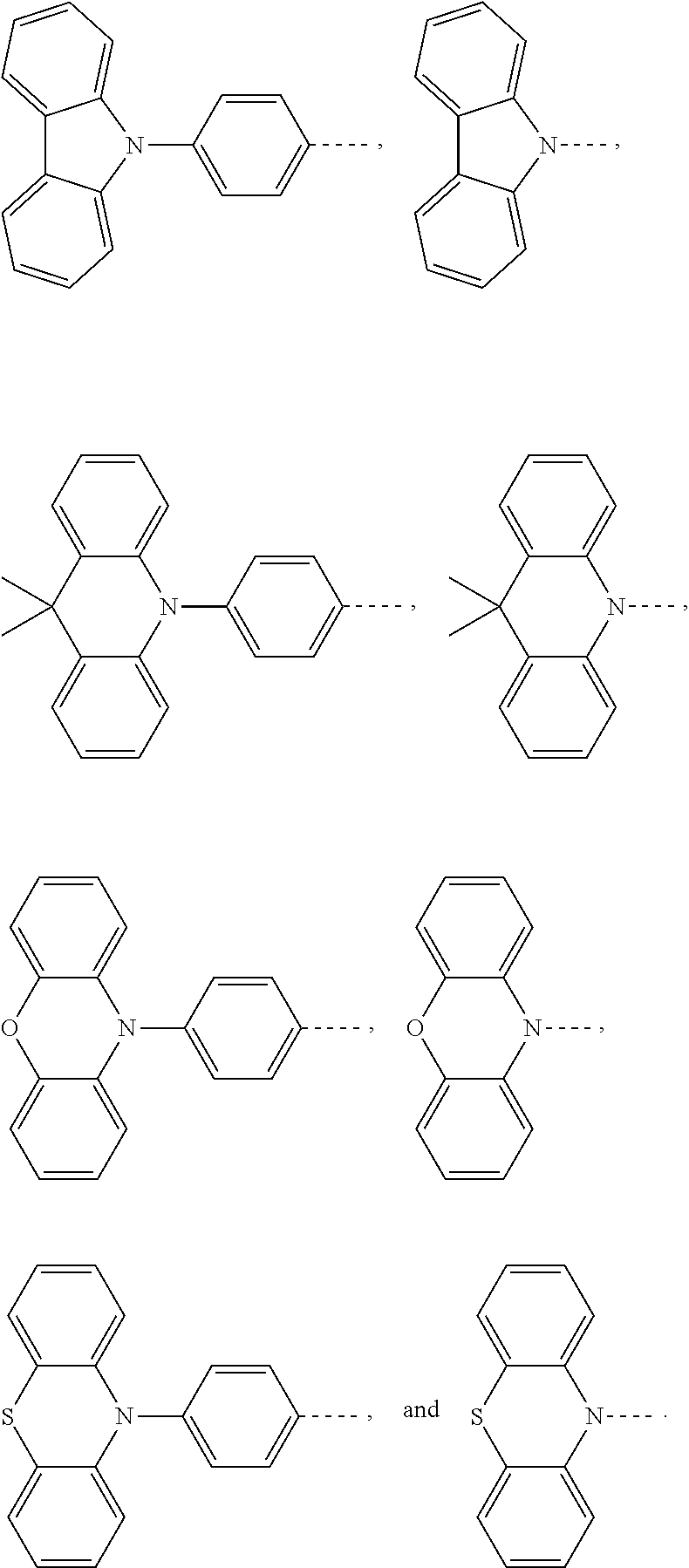
C00014

C00015

C00016
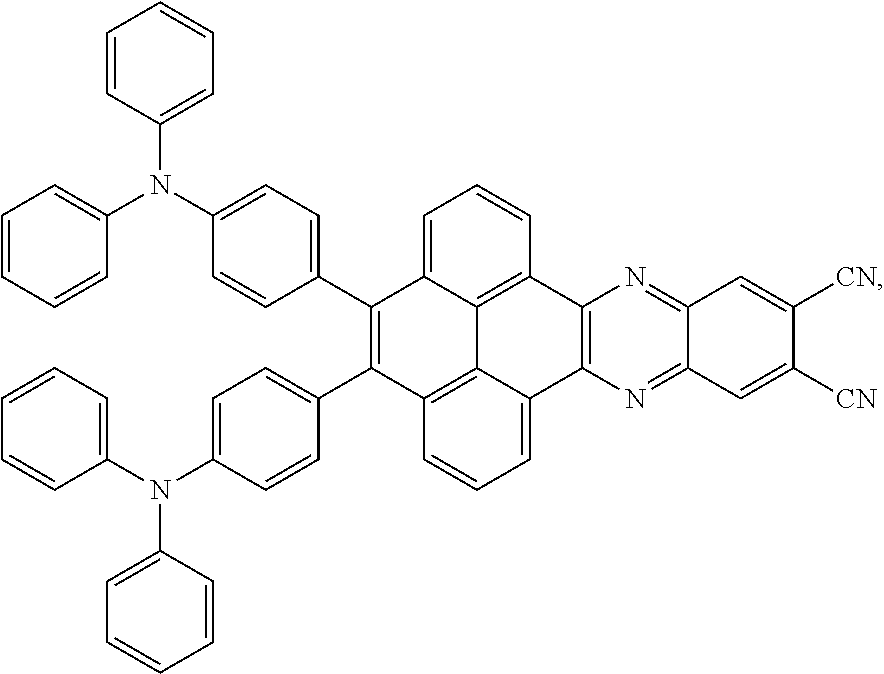
C00017
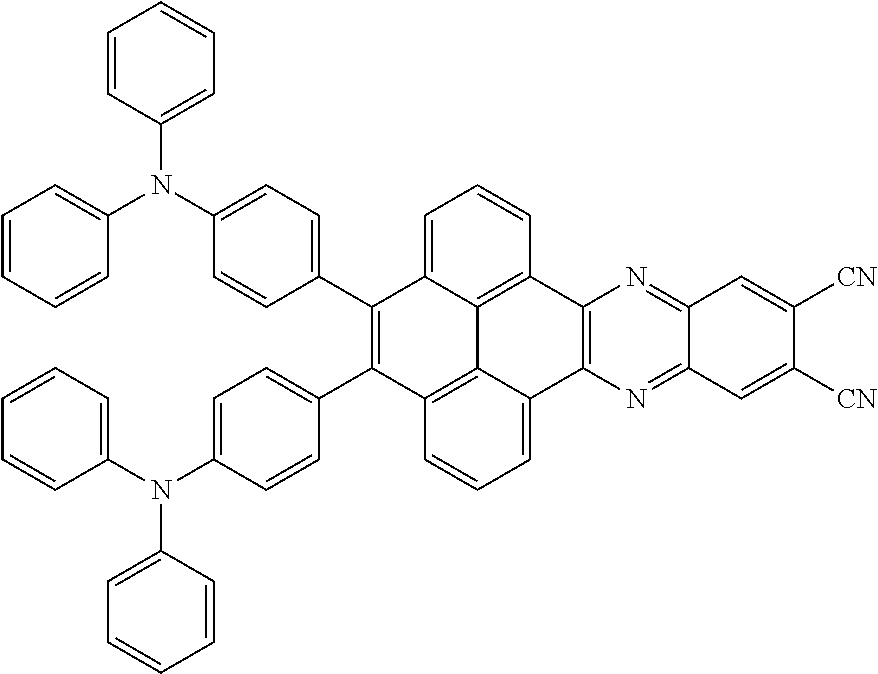
C00018

C00019

C00020

C00021

C00022
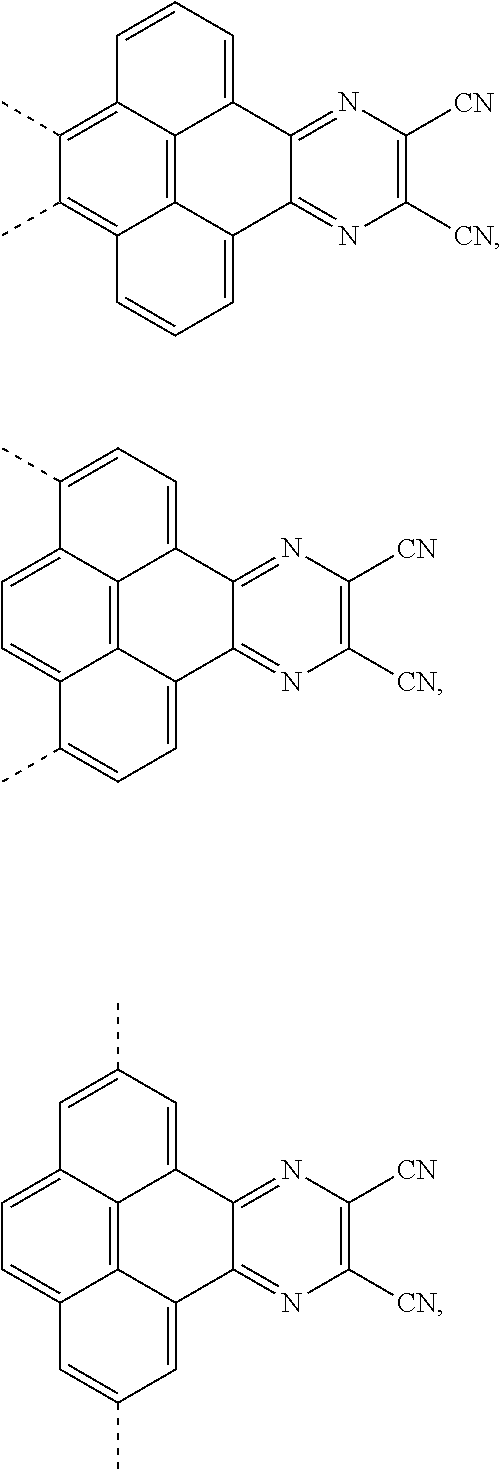
C00023

C00024

C00025

C00026
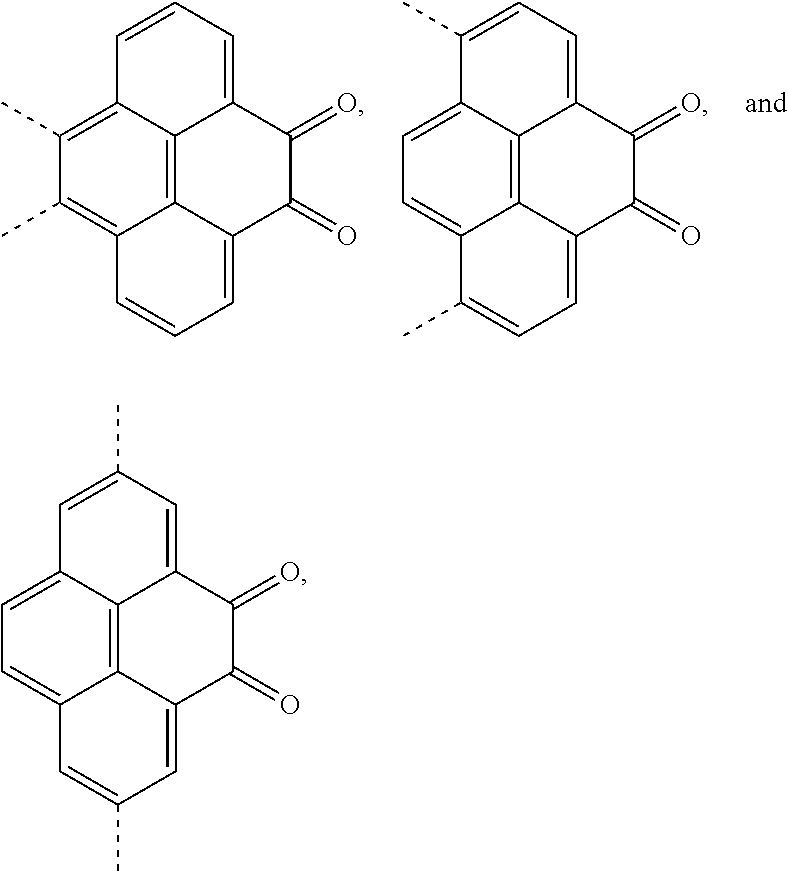
C00027

C00028
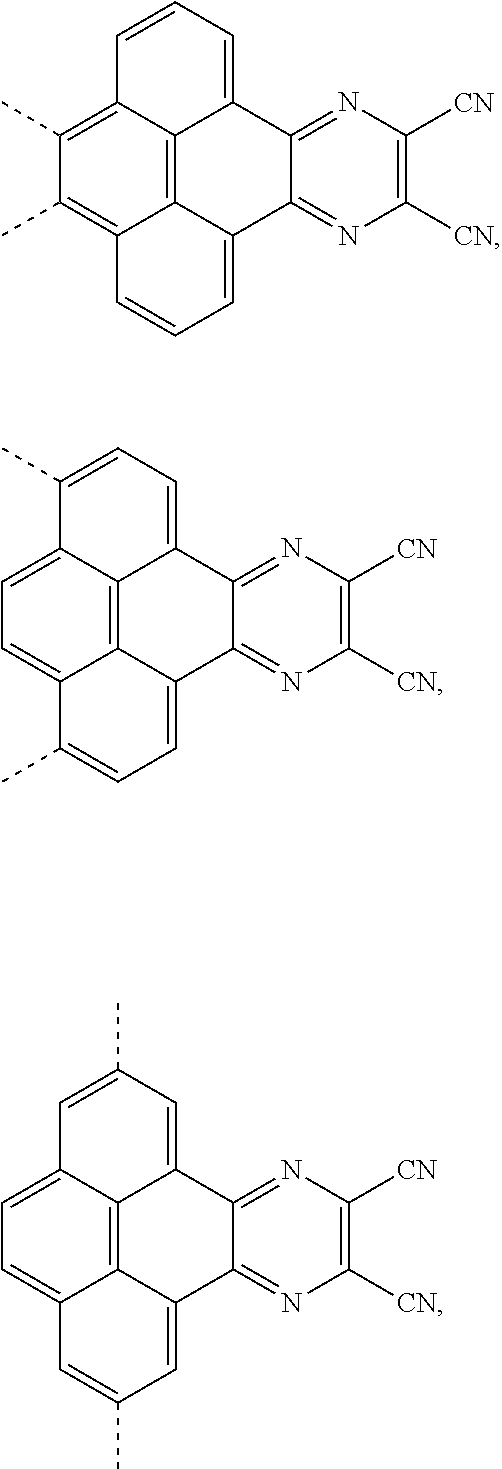
C00029

C00030
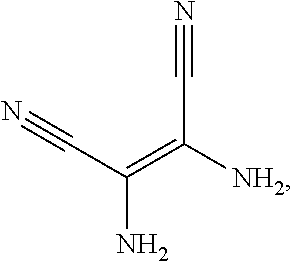
C00031

C00032

C00033

C00034

C00035

C00036

C00037
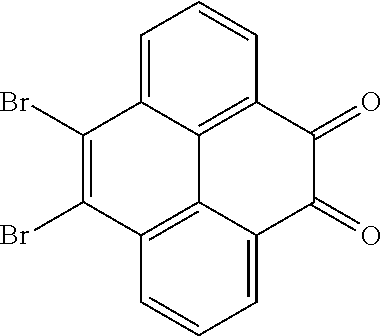
C00038

C00039
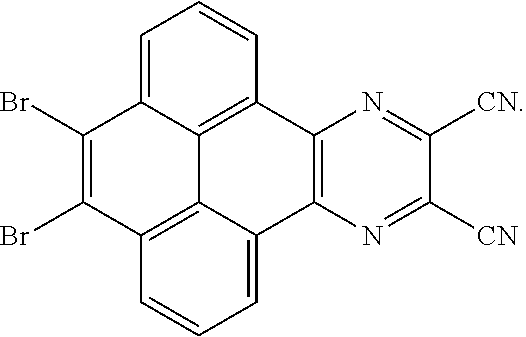
C00040

C00041

C00042

C00043
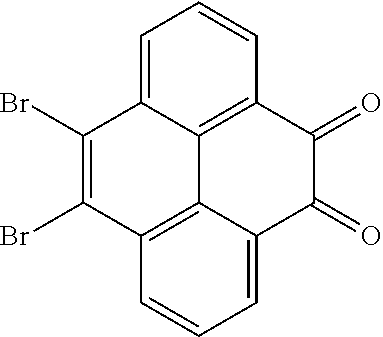
C00044
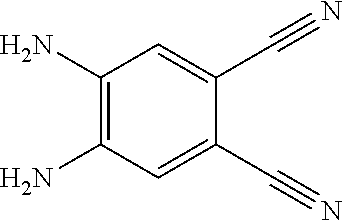
C00045
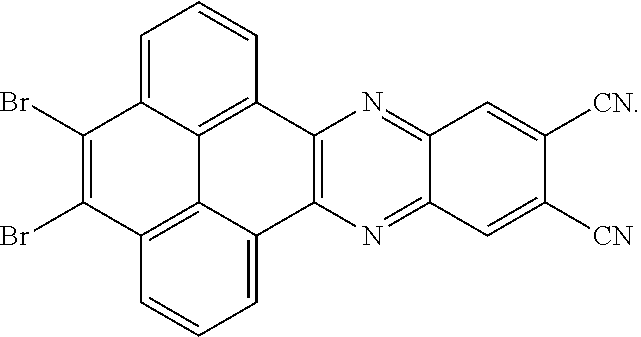
C00046

C00047

C00048
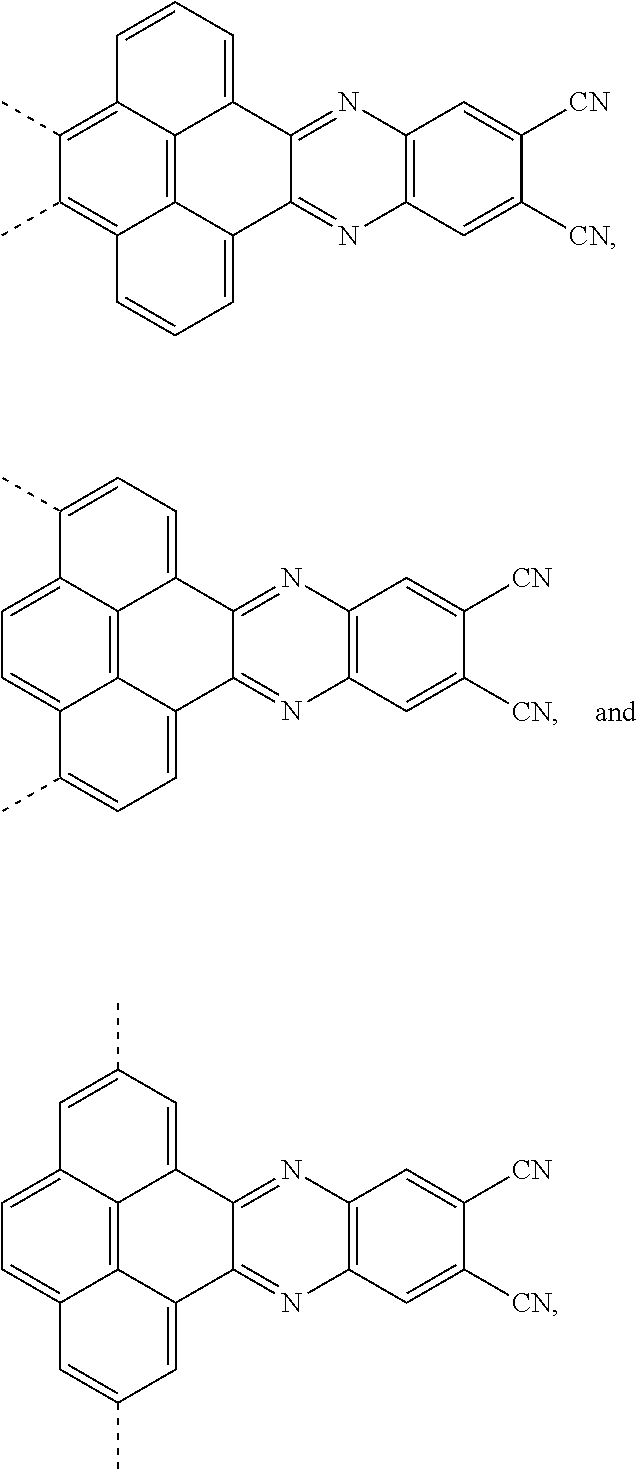
C00049

C00050

C00051

C00052
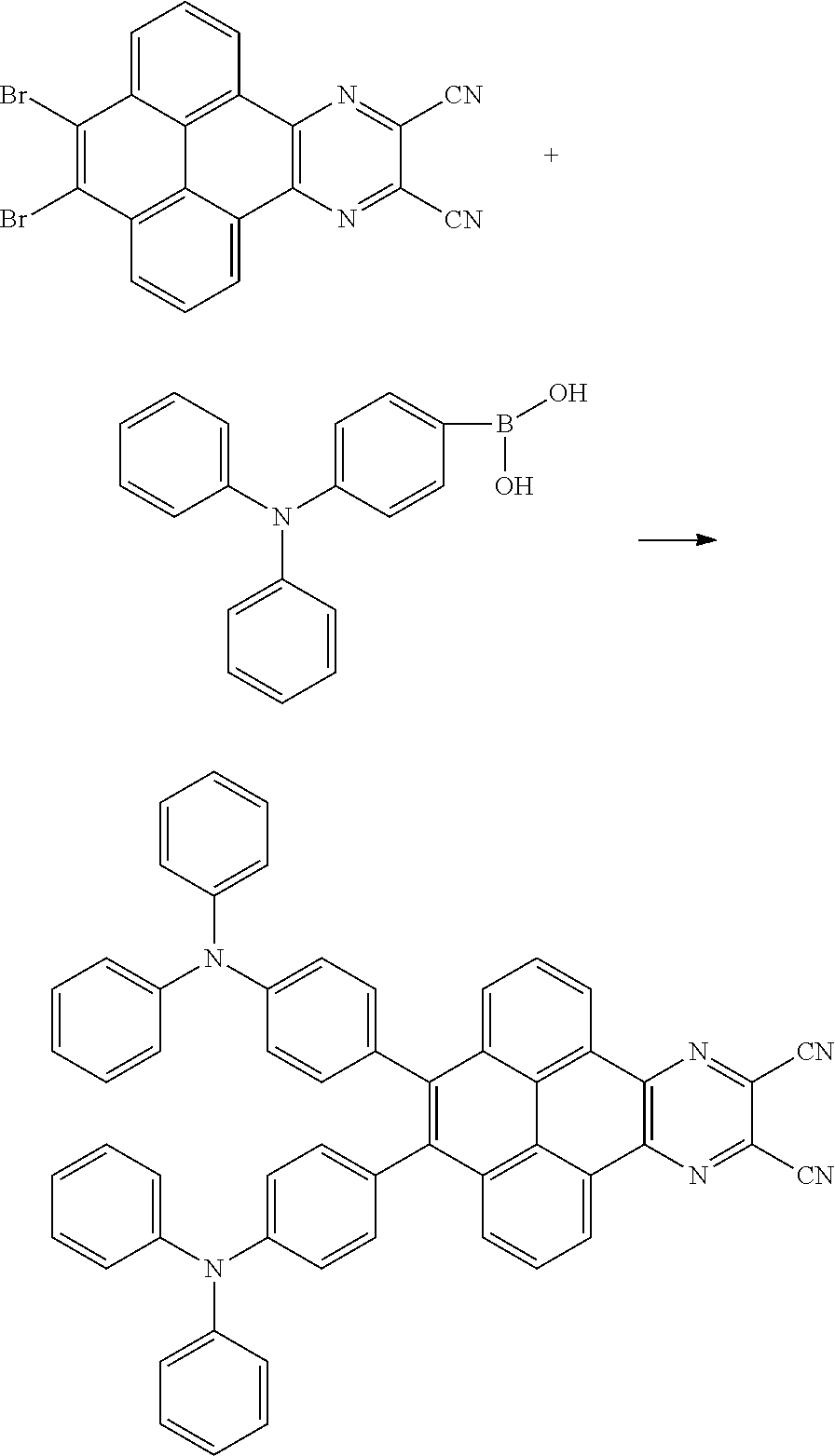
C00053
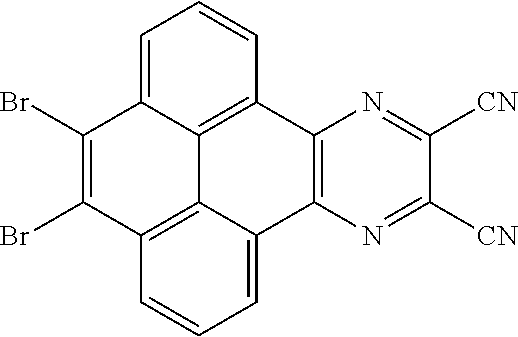
C00054

C00055
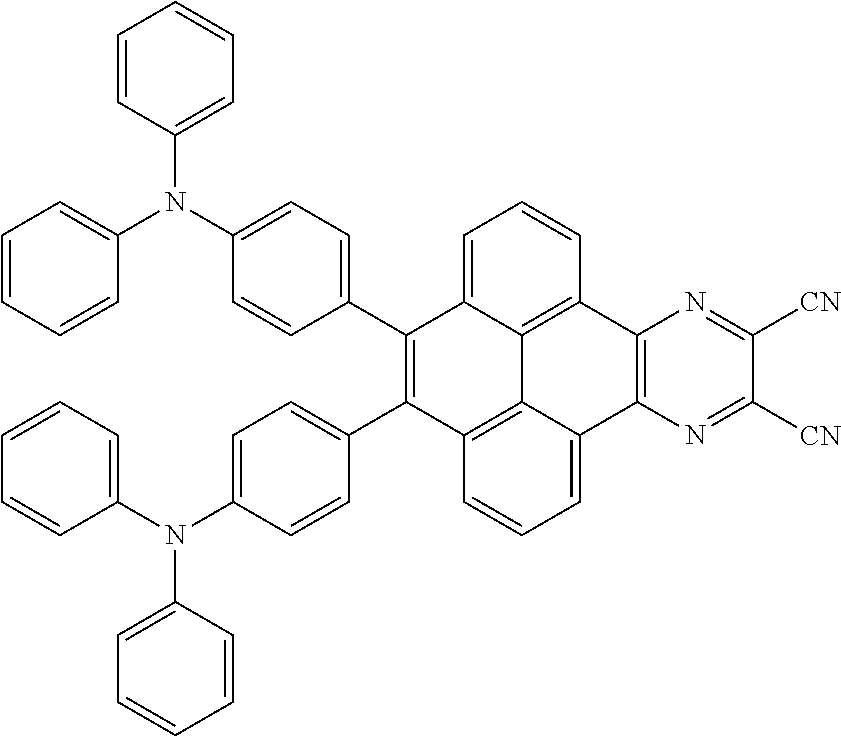
C00056

C00057
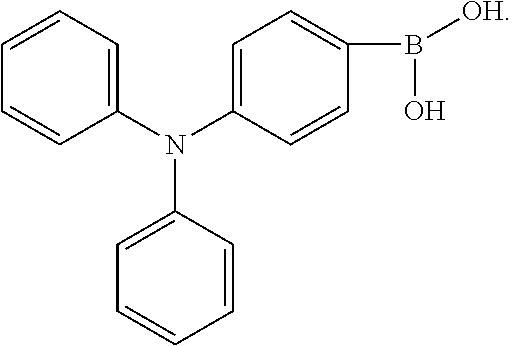
C00058
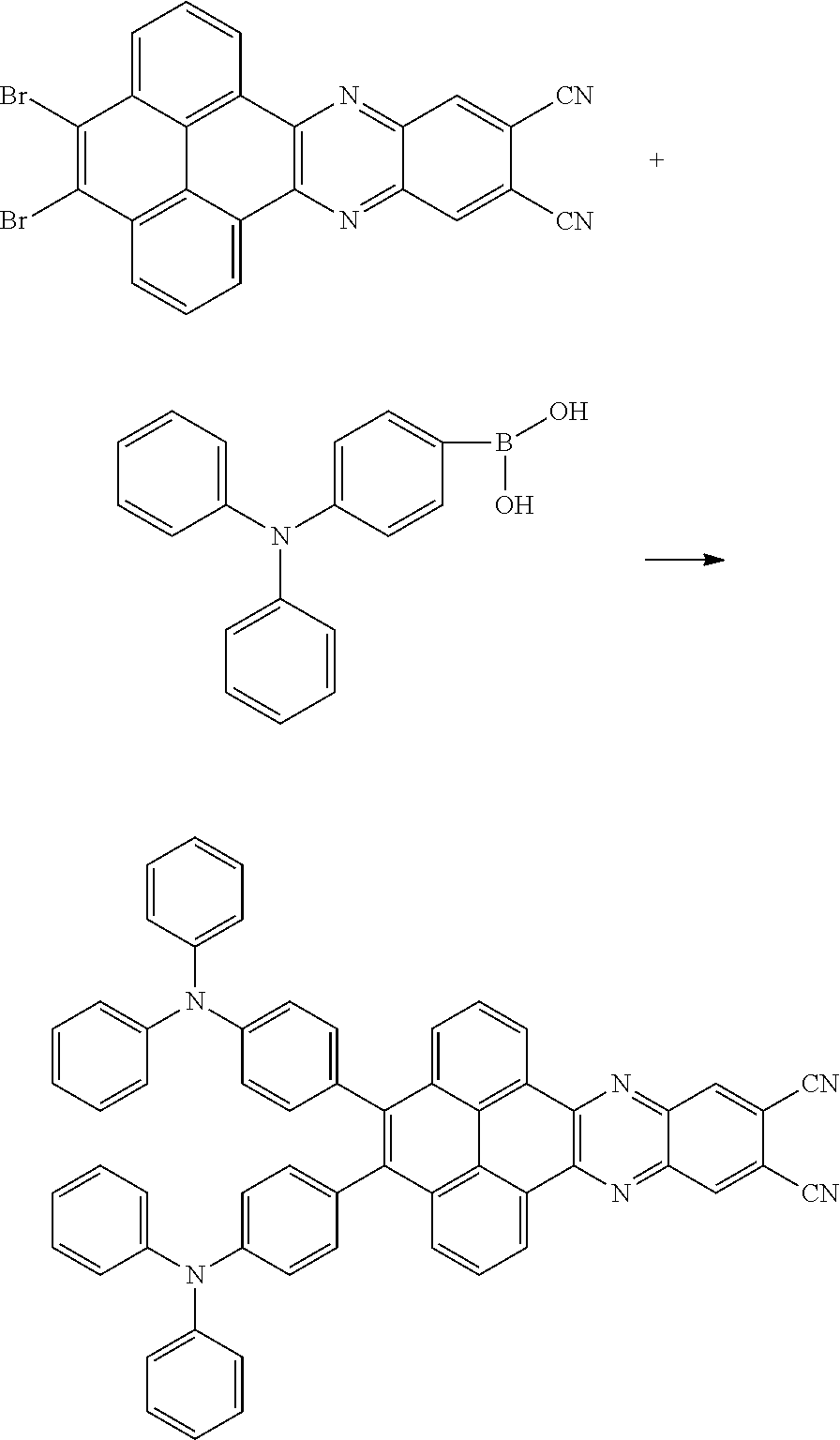
C00059

C00060

C00061

C00062

C00063
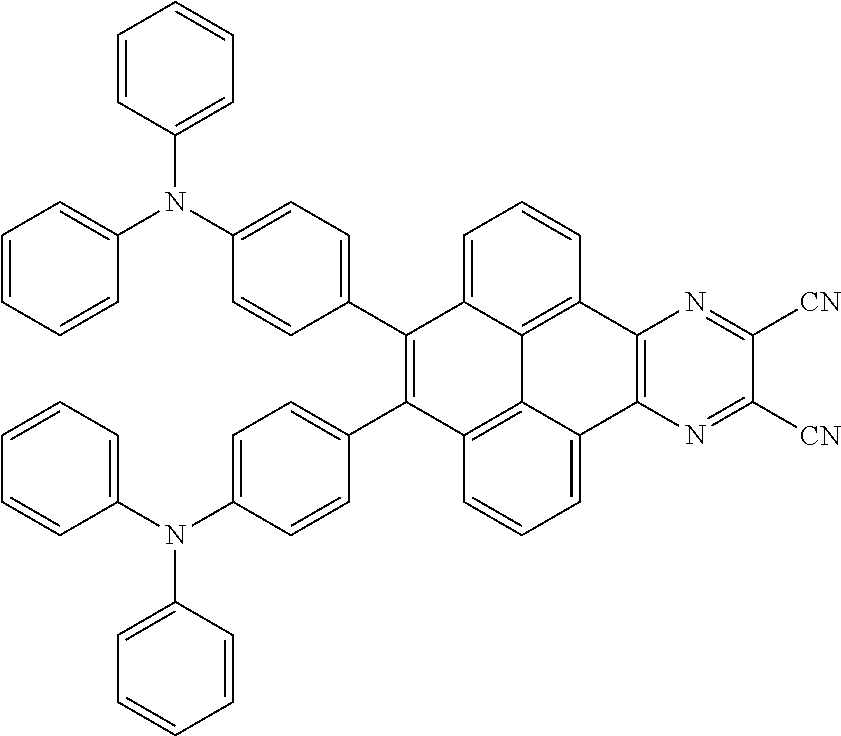
C00064
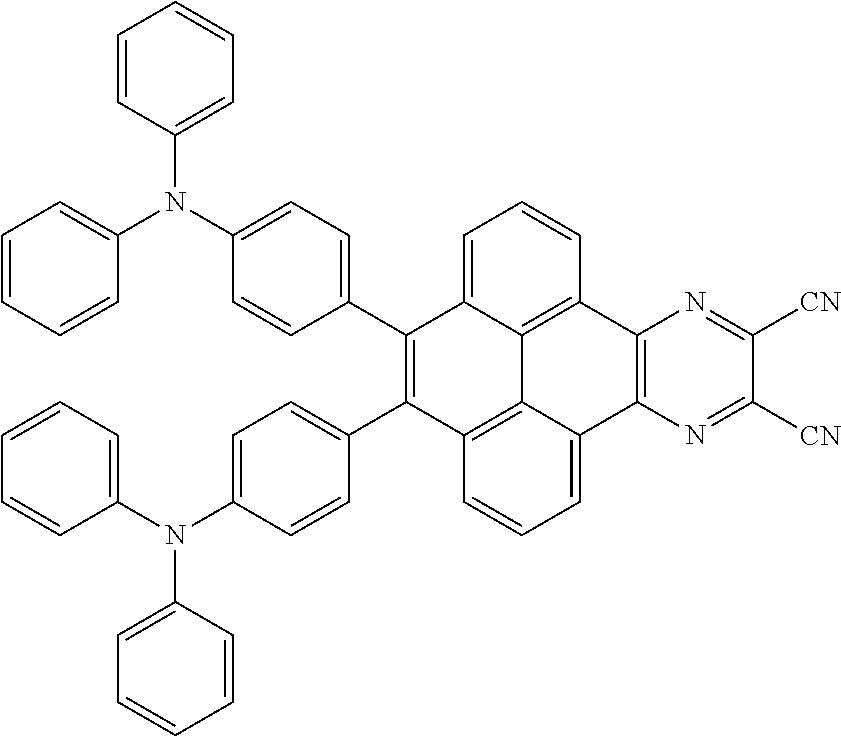
C00065
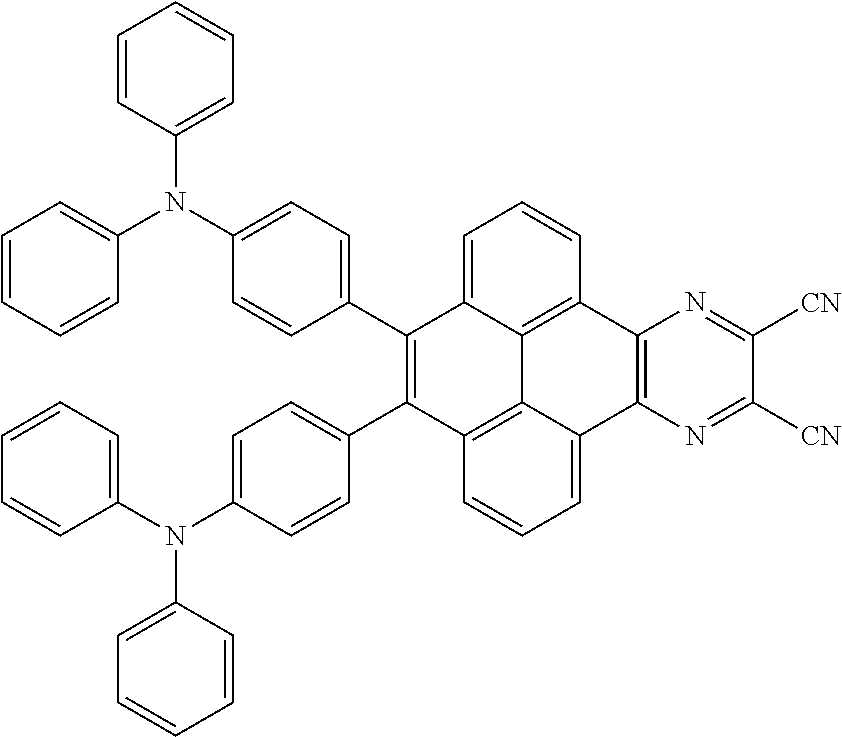
C00066

C00067
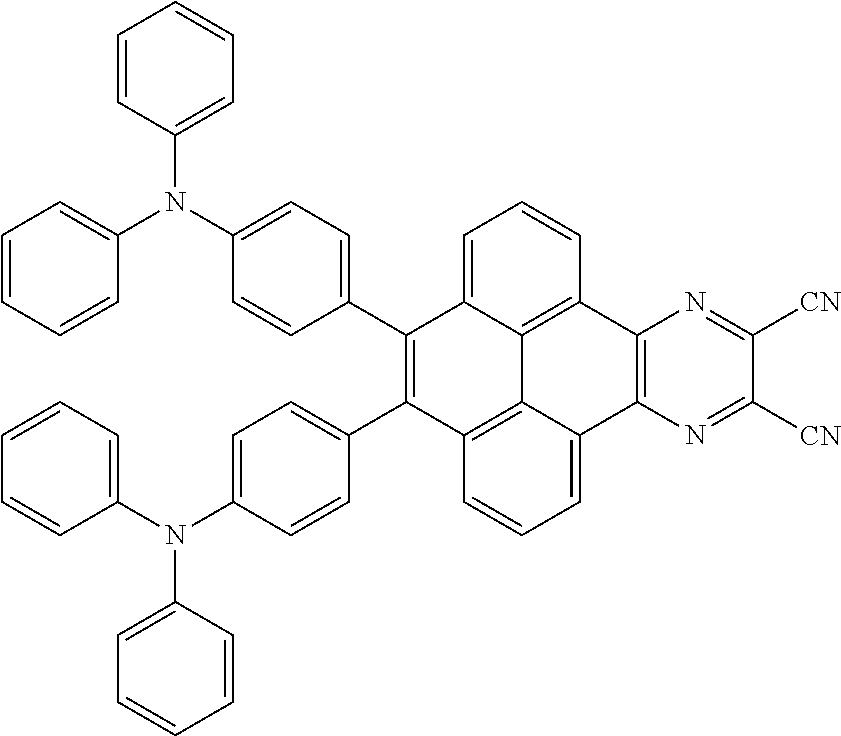
C00068

C00069

C00070

C00071

C00072

C00073

C00074

C00075
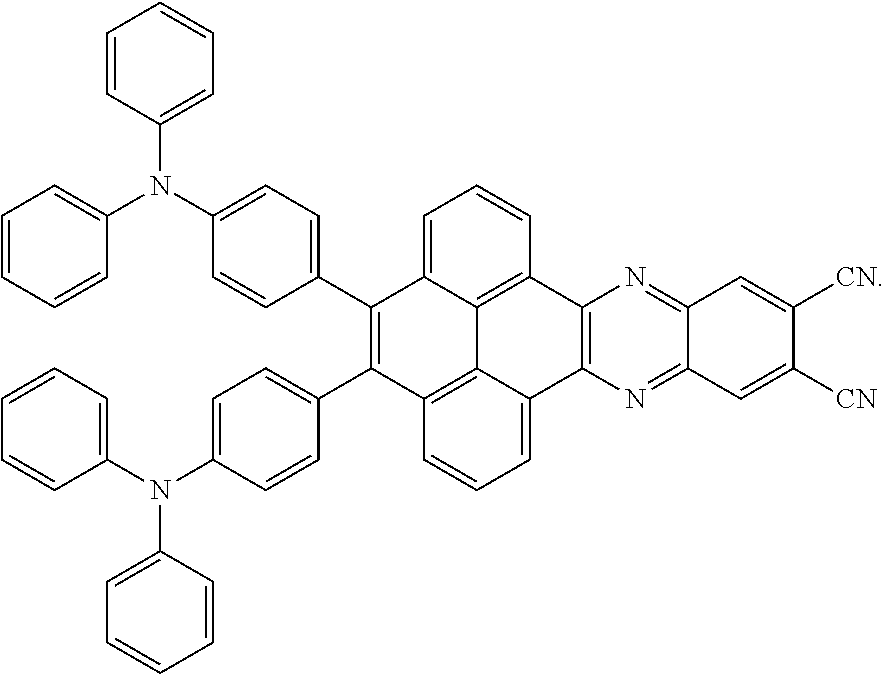
C00076

C00077

C00078

C00079
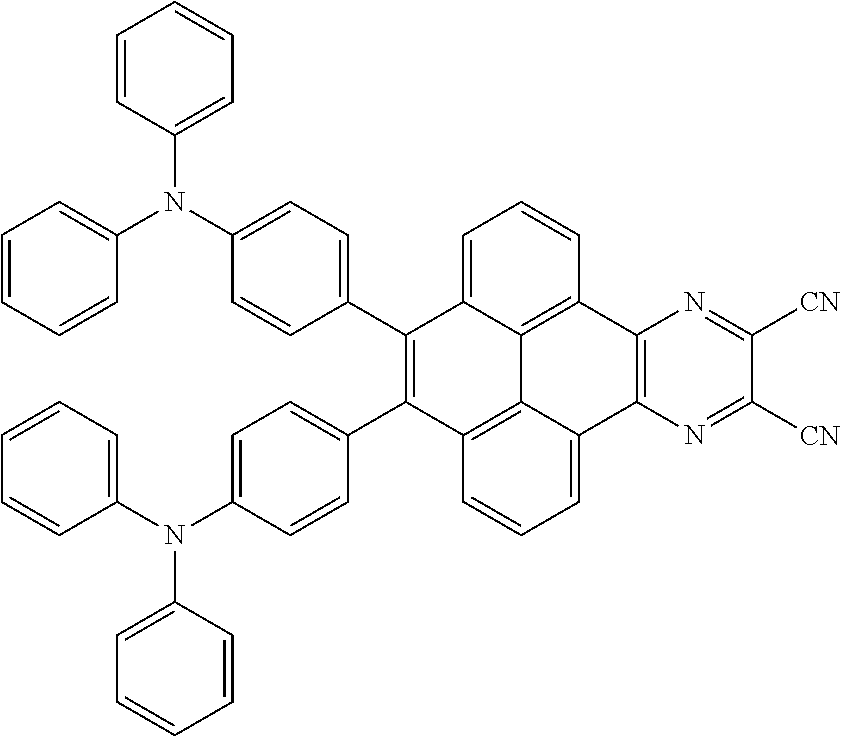
C00080
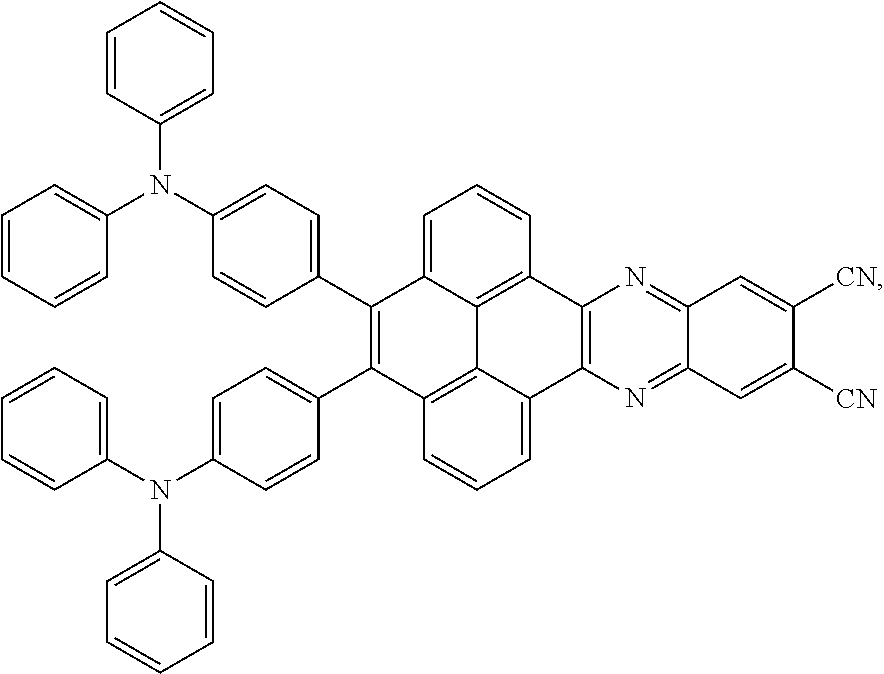
C00081
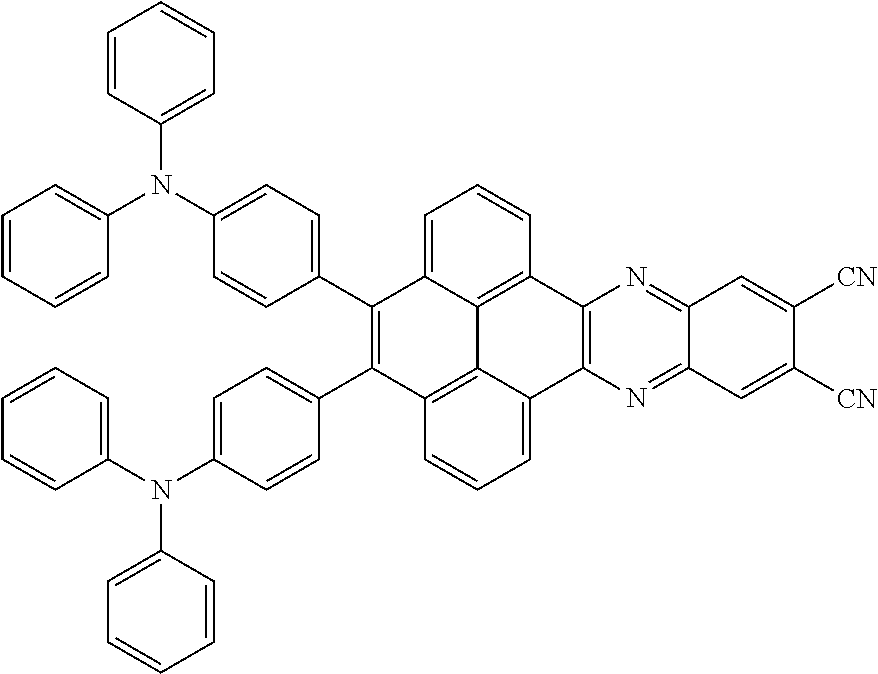
C00082

C00083

C00084

C00085
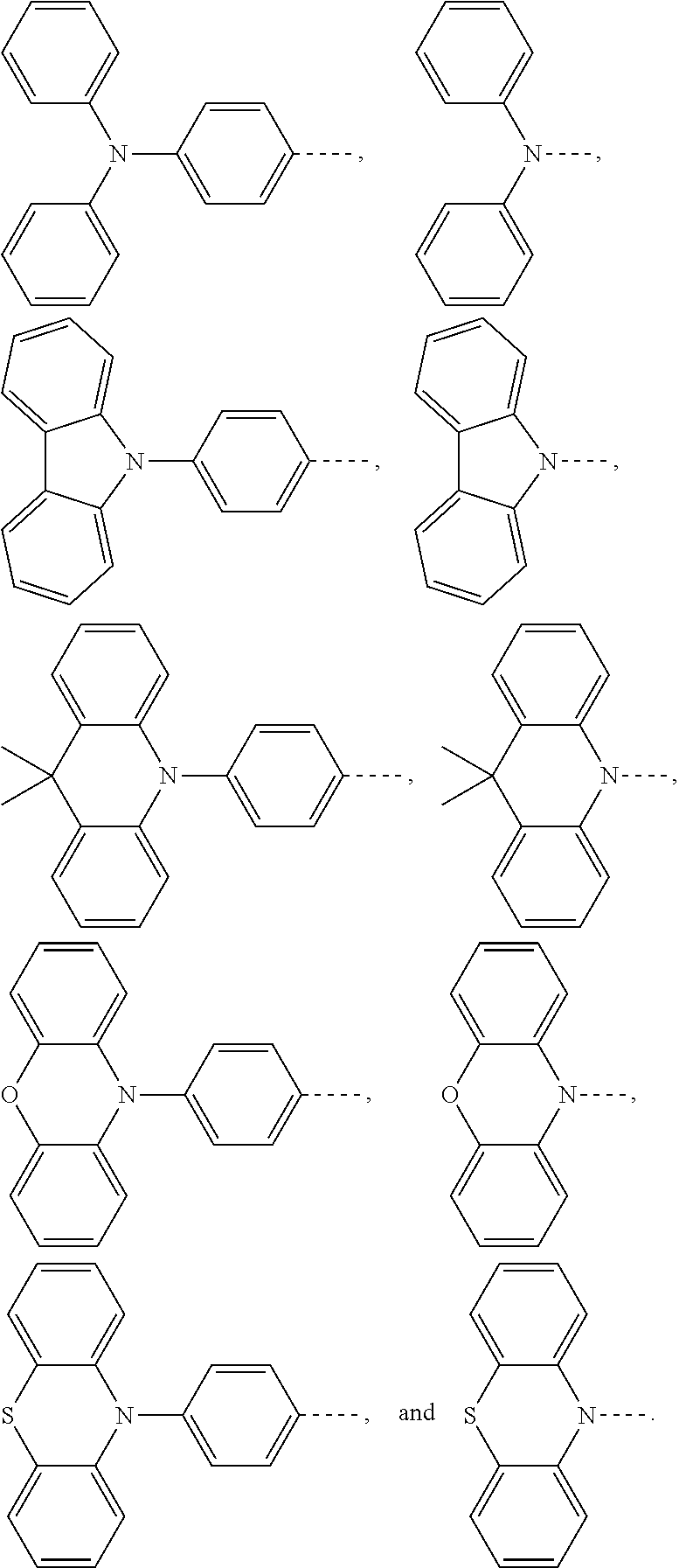
C00086

C00087
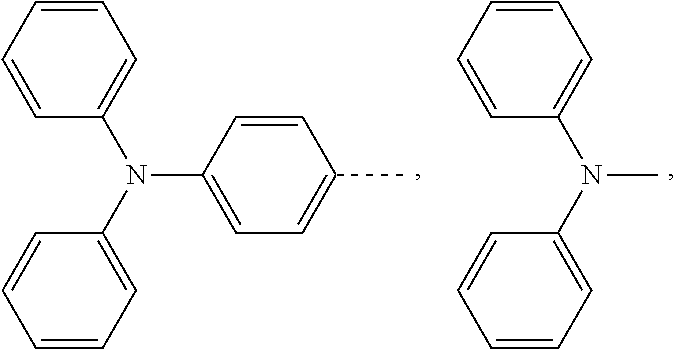
C00088

C00089

C00090

C00091
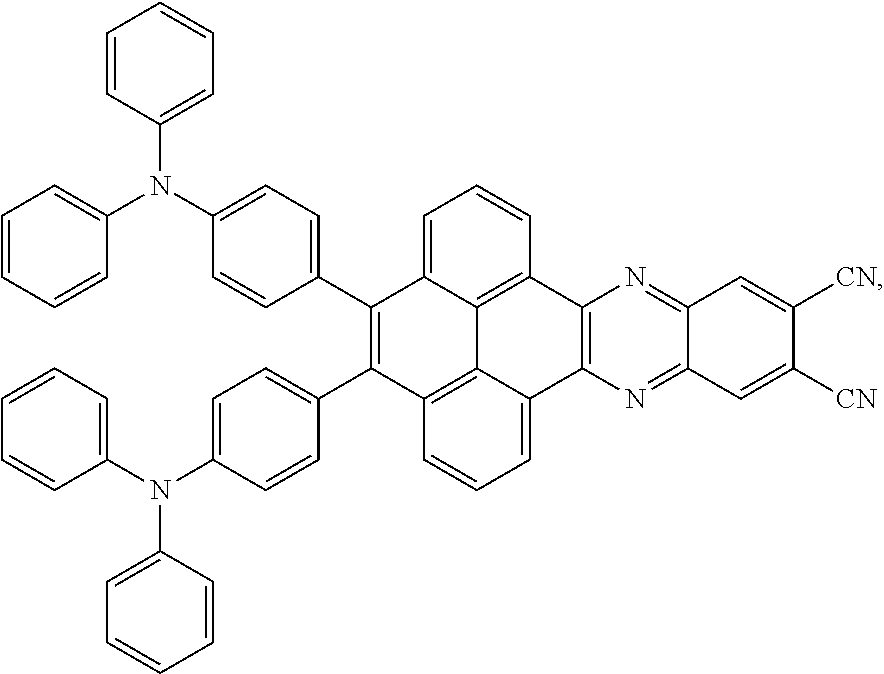
C00092
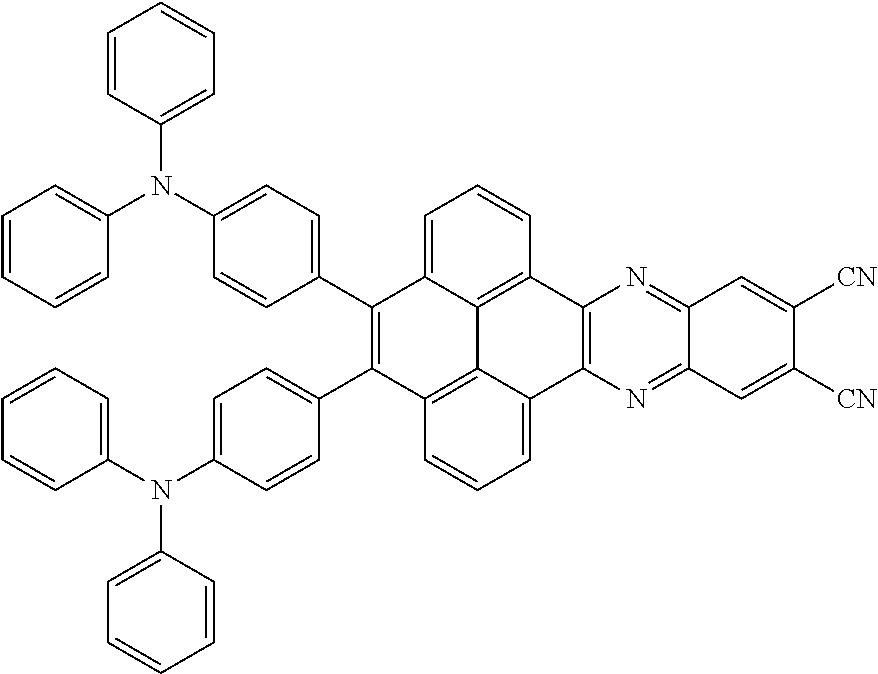
D00000
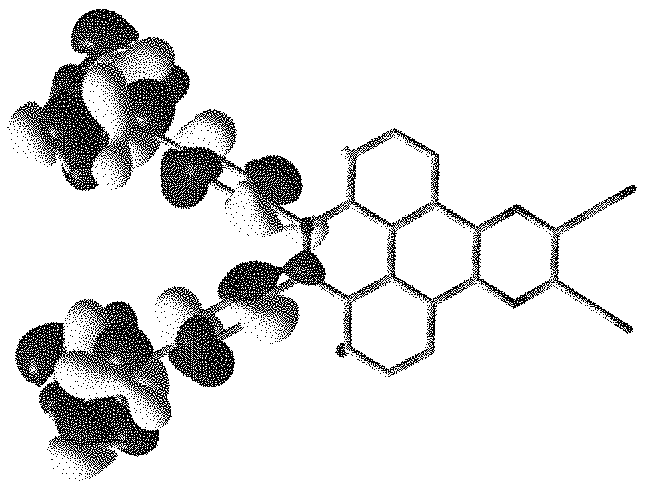
D00001

D00002

D00003

XML
uspto.report is an independent third-party trademark research tool that is not affiliated, endorsed, or sponsored by the United States Patent and Trademark Office (USPTO) or any other governmental organization. The information provided by uspto.report is based on publicly available data at the time of writing and is intended for informational purposes only.
While we strive to provide accurate and up-to-date information, we do not guarantee the accuracy, completeness, reliability, or suitability of the information displayed on this site. The use of this site is at your own risk. Any reliance you place on such information is therefore strictly at your own risk.
All official trademark data, including owner information, should be verified by visiting the official USPTO website at www.uspto.gov. This site is not intended to replace professional legal advice and should not be used as a substitute for consulting with a legal professional who is knowledgeable about trademark law.